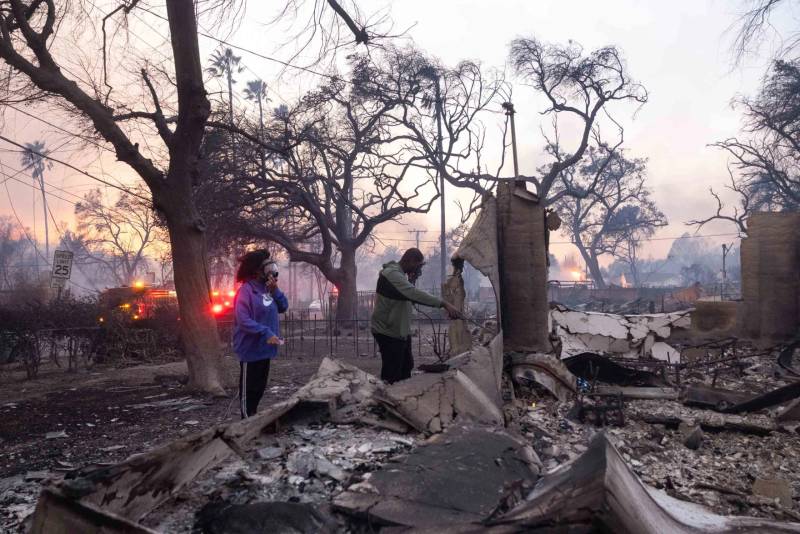Here are the morning’s top stories on Tuesday, January 14, 2025…
- The Eaton Fire tore through the community of Altadena. The city has long been a sanctuary for Black people, who make up about 18-percent of its population. The losses from the fire are felt deeply in the community and beyond.
- Pacific Palisades, where the Palisades fire continues to burn, is often known for its glitzy homes and celebrity residents. But it hasn’t always been that way.
Displaced Altadena Residents Grapple With Grief And Uncertainty
Altadena is one of those rare places in Los Angeles County where people of many backgrounds and ethnicities have been able to afford the American Dream of homeownership.
Situated near the base of the San Gabriel Mountains northeast of downtown L.A., Altadena was known for its mixture of single-family homes, restaurants and businesses. It’s been a sanctuary for Black residents in particular: homeownership for African Americans there is about 81% — close to double the national rate.
So when the Eaton Fire ignited and tore through Altadena and parts of neighboring Pasadena, the loss was felt deeply in the community and beyond — both by those who are familiar with its history and by those just learning of it.
Until the 1960s, Altadena was almost an entirely white community largely because of redlining, the practice of discriminating against people in certain areas by denying them access to financial support, like mortgages. People of color and and other underrepresented communities, weren’t able to buy homes in Pasadena or parts of Altadena because of this practice. Major societal change came during the Civil Rights Era. Racist property-use laws became unenforceable and later legal actions banned housing discrimination outright, helping end de facto practices that locked Black families out.
History Of Pacific Palisades Does Not Just Include The Wealthy
Pacific Palisades is often known for its glitzy homes and celebrity residents. But has it always been that way?

